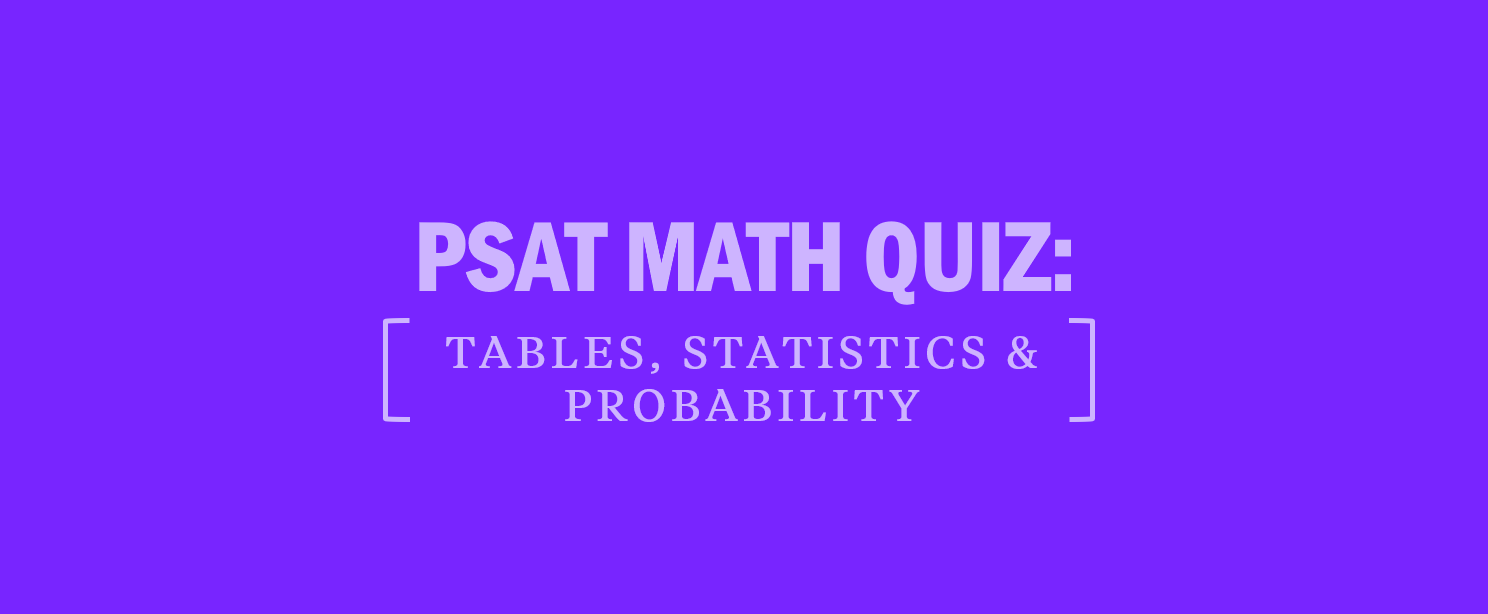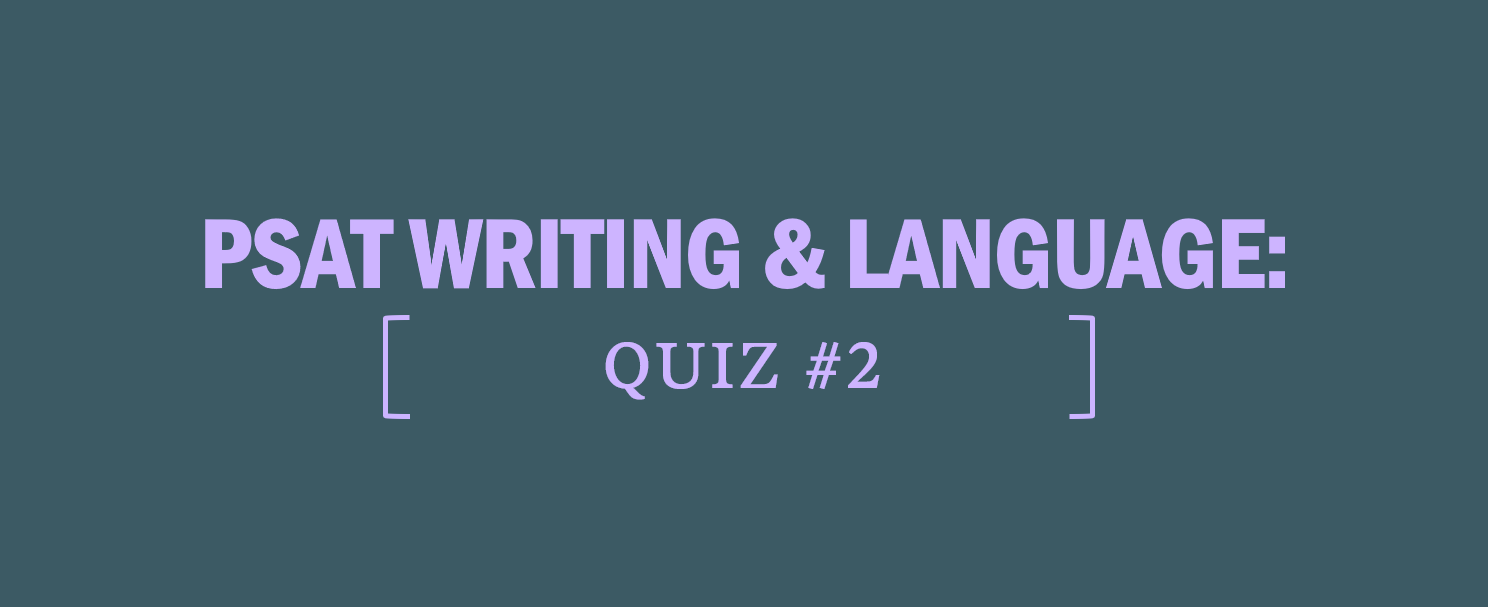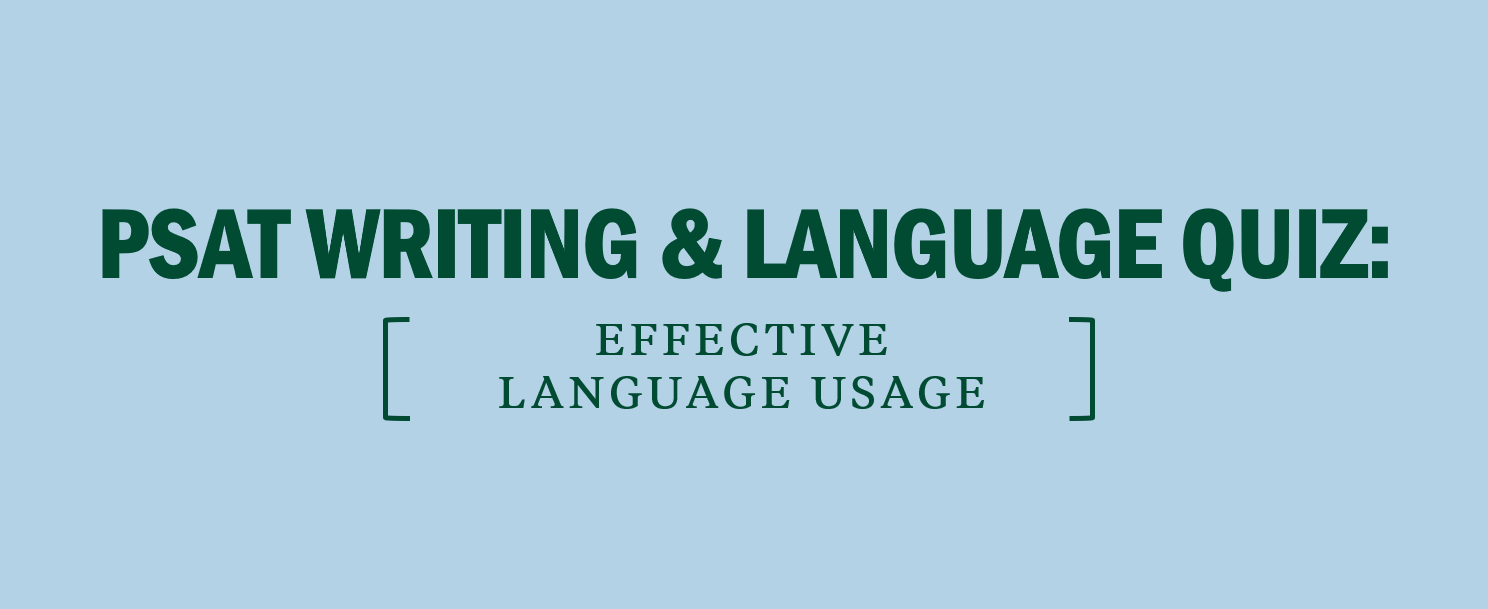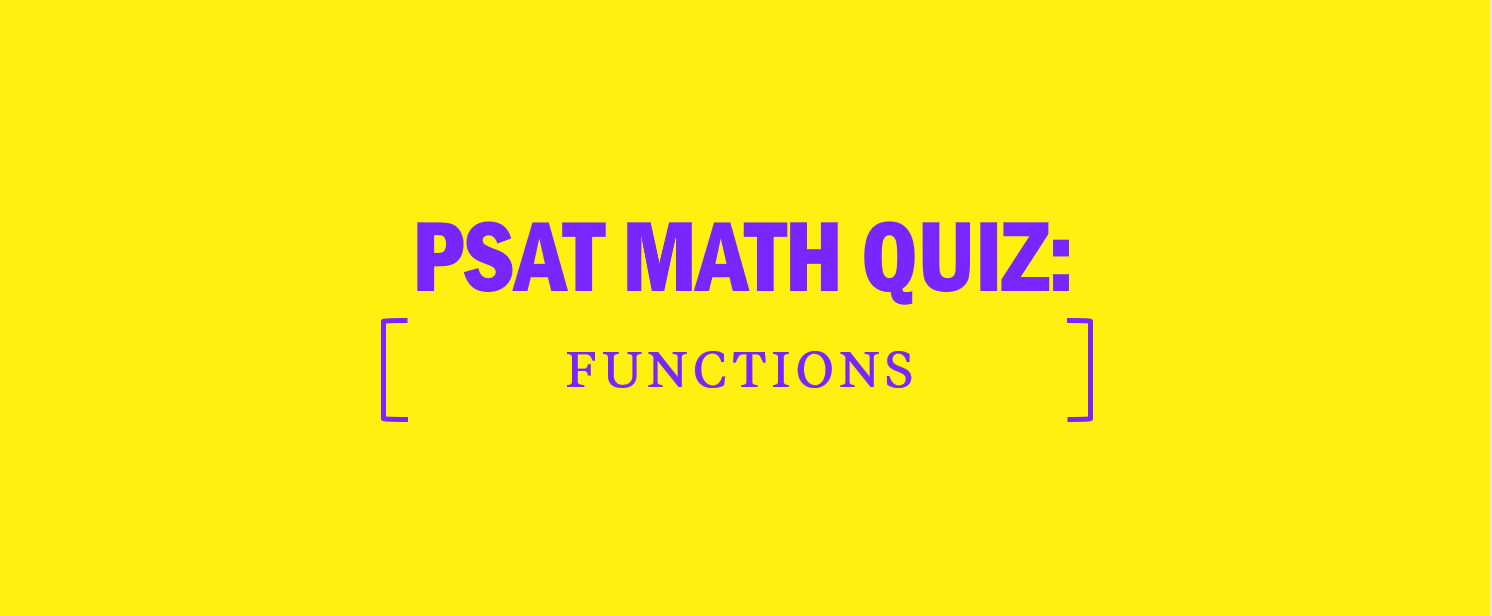PSAT Math Quiz: Tables, Statistics, and Probability
Test your PSAT readiness by taking this PSAT Math quiz!
Answer 1
D: The question asks for the answer choice that is NOT a true statement, so test each one. Use the table to determine the correct percents for each choice. Notice that all choices are about the estimated percent of students in each class who voted for basket- ball as their favorite sport, so use the percent formula, percent (part / whole) = 100%. In each case, the part is the number of students in each class who voted for basketball, while the whole is the total number of students in that class:
(A) (370 / 1350) x 100% = 0.274 ≈ 27%
(B) (314 / 1355) x 100% = 0.231 ≈ 23%
(C) (365 / 1349) x 100% = 0.270 ≈ 27%
(D) (291 / 1340) x 100% = 0.217 ≈ 22%
Hence, (D) must be correct since the statement was about 30% and NOT about 22%.
Answer 2
C: Examine the bar chart to evaluate the choices.
(A): The bar for “Unlikely” (which is 3 on the scale given in the question) is clearly the tallest, so this is the mode. Eliminate (A).
(B): There are 2,000 responses, so the median is the average of responses 1,000 and 1,001. The total of the first two bars is about 600. Since the third bar is about 700, that means that the median response is indeed within this bar. Eliminate (B).
(C): The data is skewed to the right, meaning that the extreme values on the right will weight the mean calculation to make the mean greater than the median. Thus, (C) is not true and is the correct choice.
(D): If you were not certain that (C) was the correct choice, you could see that the substantial majority of values are between 2 and 5 inclusive, so the mean has to be somewhere within that wide range. Eliminating (D) confirms (C) as correct.
Answer 3
A: According to the bar graph, the company’s yearly profits have been growing by about $10 million annually. To reach yearly profits that are 100% greater than (or double) its profits in 2013, the company would need yearly profits of 2 × $60 million = $120 million. This is $50 million more than in 2014. At $10 million more per year, reaching this target would take 5 more years. Thus, the company should double its 2013 profits in 2014 + 5 = 2019, which is (A).
Answer 4
B: To calculate the percentage of people in each age group who had a high school diploma only, divide the number of people in that age group with only a high school diploma by the total number of applicants in that age group. Choice (B) is correct because (16 / 44) ≈ 0.364 = 36.4%, which is a lower percentage than that of the other age groups (18 to 25 ≈ 60.5%, 36 to 45 ≈ 42.3%, and Older than 45 = 50%).
Answer 5
C: The study only looked at pollen allergies, so the sample was limited. You can eliminate (A) because not all allergies were included in the sample—you can’t say anything about them one way or the other. You can eliminate (B) by similar reasoning: the antihistamine found to be most effective for pollen allergies may or may not be the most effective one for other types of allergies as well; there is just no way to tell. You can eliminate (D) because the question doesn’t tell you anything about the data collection methods, so you can’t determine whether the study was biased. This means that (C) is correct—the study will be able to produce results concerning the effects of the antihistamines only on pollen allergies.
Previous: PSAT Math Quiz: Functions











